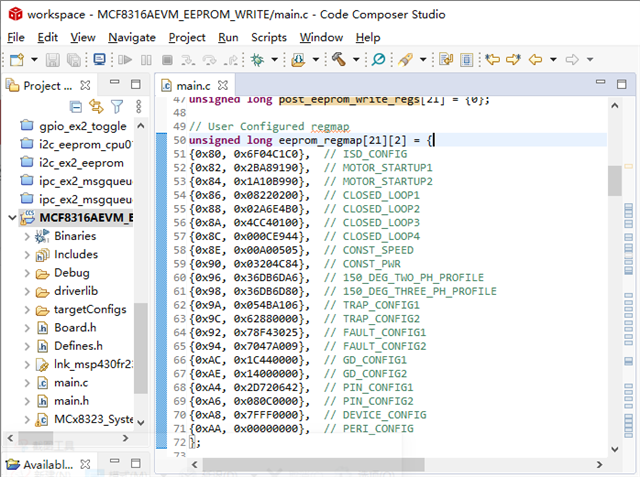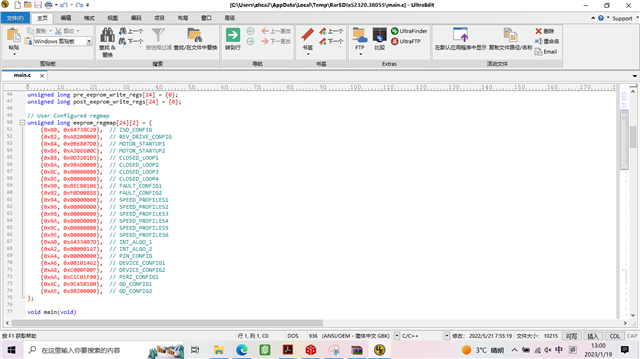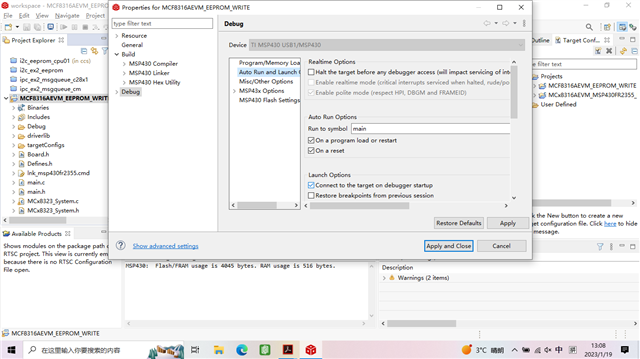Other Parts Discussed in Thread: MCF8316AEVM
Hi Team,
Could you please tell me how to use the official GUI to program parameters into EEPROM?
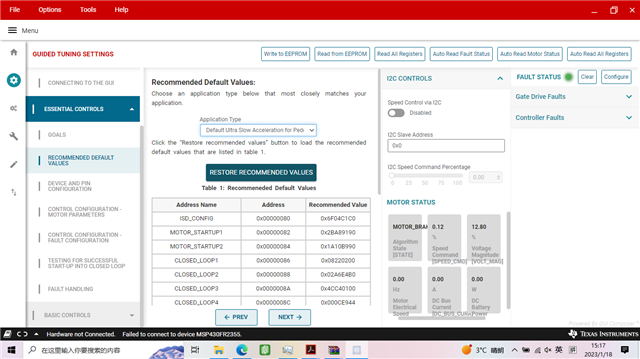
From the button in the middle of the motor driver interface, I can see that the serial port transceiver indicator light is continuously flashing, indicating that there is data interaction.
After modifying the parameters of the register, I've found that the serial port transceiver indicator will also flash, indicating that the modification is valid, and it is also possible to control the motor in this online way.
But in this case, I believe these parameters are not programmed into the EEPROM. Every time the breakpoint is restarted, I read back the register and find the parameters are not the parameters for programming but a set of fixed parameters.
I have tried writing into key A5.
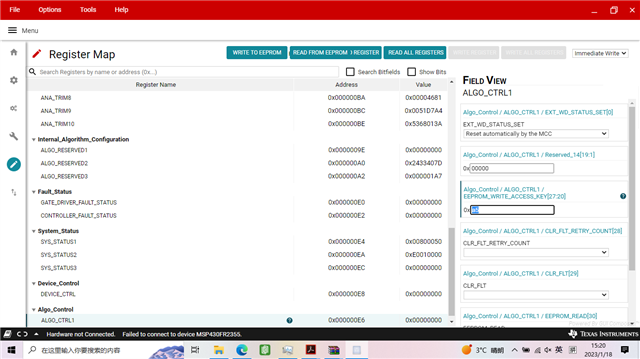
Then I clicked.
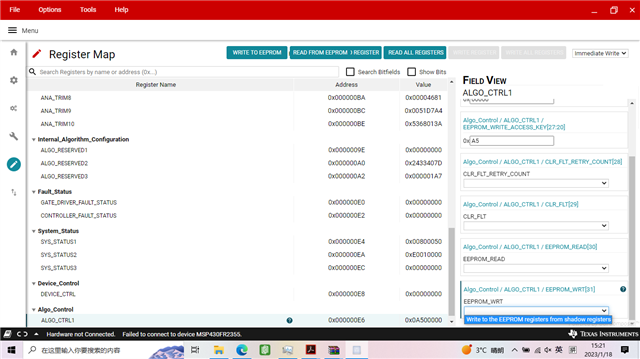
However, a set of fixed parameters is read back after breakpoint restarts. They are not the parameters I programmed, and now I can only debug online. Could you please tell me why?
Kind regards,
Katherine



